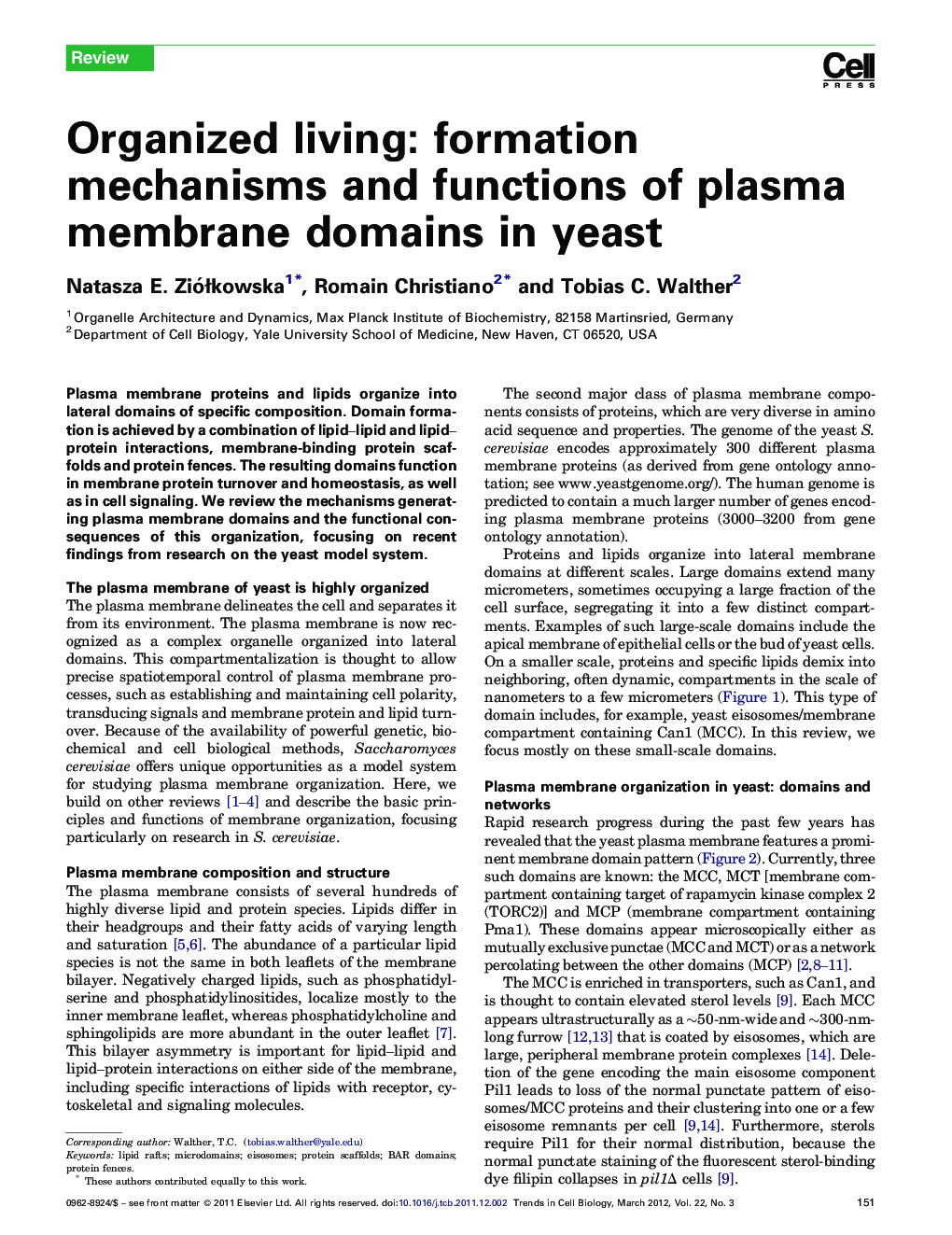| Article ID | Journal | Published Year | Pages | File Type |
|---|---|---|---|---|
| 2204797 | Trends in Cell Biology | 2012 | 8 Pages |
Abstract
Plasma membrane proteins and lipids organize into lateral domains of specific composition. Domain formation is achieved by a combination of lipid–lipid and lipid–protein interactions, membrane-binding protein scaffolds and protein fences. The resulting domains function in membrane protein turnover and homeostasis, as well as in cell signaling. We review the mechanisms generating plasma membrane domains and the functional consequences of this organization, focusing on recent findings from research on the yeast model system.
Related Topics
Life Sciences
Biochemistry, Genetics and Molecular Biology
Cell Biology
Authors
Natasza E. Ziółkowska, Romain Christiano, Tobias C. Walther,
